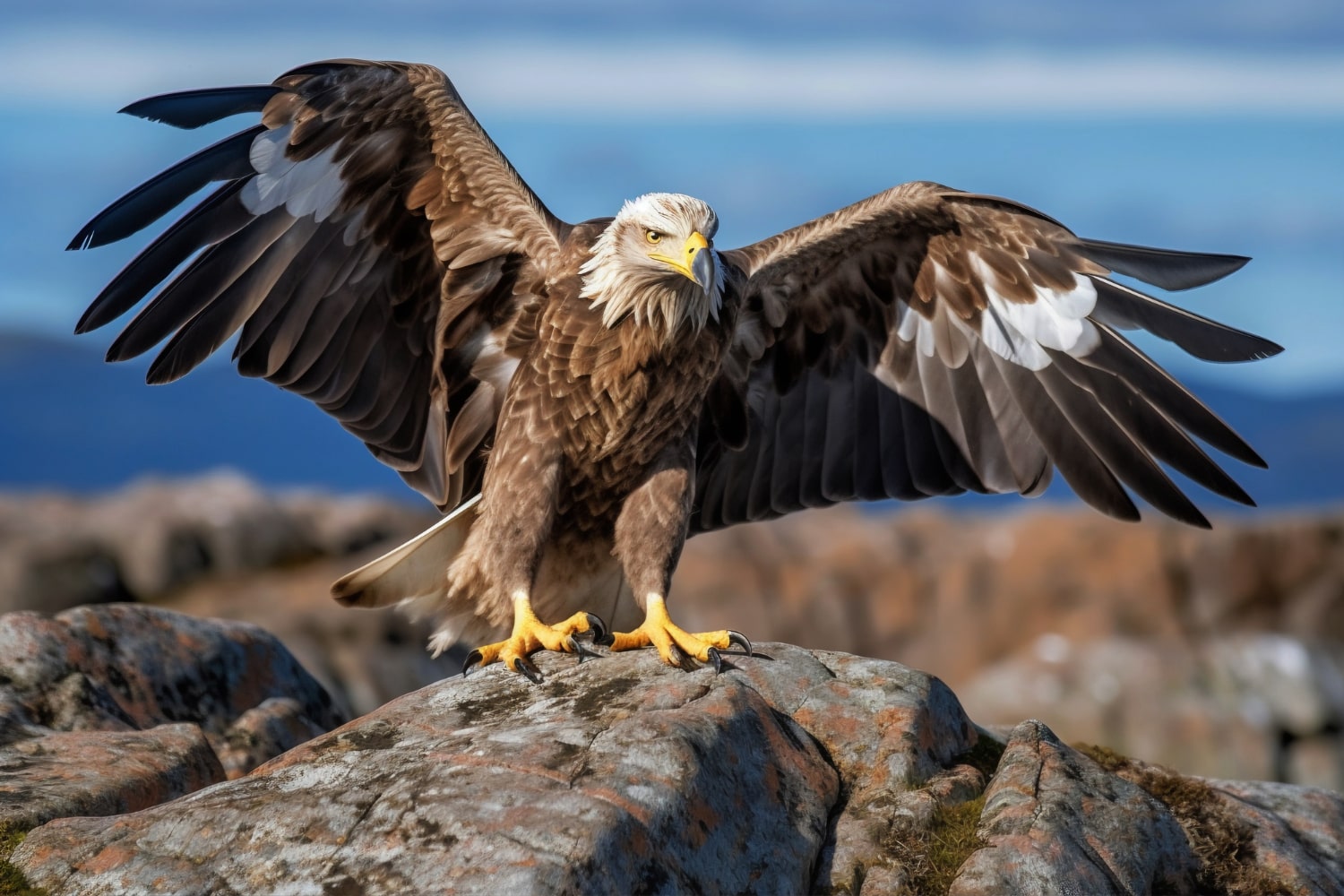Eagles are among the most majestic birds on Earth. They captivate with their strength, sharp eyesight, and graceful flight. Revered as symbols of courage, victory, and freedom in many cultures, eagles also play a crucial role in natural ecosystems. Despite their popularity, there are many fascinating and lesser-known facts about these powerful birds of prey. This article presents captivating facts about eagles that you might not have heard before.
- Eagles have vision that is four to five times sharper than that of humans. Their eyesight is so acute that they can spot small prey from over a kilometer away. This gives them a significant advantage when hunting across open landscapes or mountainous terrain.
- Some eagle species are capable of soaring to incredible heights. The bearded vulture, for example, can fly at altitudes exceeding 7,000 meters, higher than the cloud line. This ability allows them to traverse vast mountain ranges with ease.
- Eagles can glide for hours without flapping their wings. They use rising air currents to stay aloft and conserve energy. This enables them to scan large territories while searching for prey.
- In many eagle species, females are larger than males. This size difference helps divide roles in hunting and nest protection. Such sexual dimorphism is common among birds of prey.
- Eagles have extremely powerful talons used to grab and hold prey. The pressure they can exert exceeds 300 kilograms per square centimeter. Even large mammals cannot escape their grip once captured.
- Eagle nests can reach enormous sizes and be used for many years. One bald eagle nest in the United States was recorded at over two tons in weight. Eagles add new branches and lining to the nest each year.
- The bald eagle, a national symbol of the United States, is not born with a white head. Its feathers turn white only around the age of five when it reaches maturity. Before that, young birds have uniformly brown plumage.
- Some eagles specialize in fishing, such as the sea eagle and the African fish eagle. They snatch fish from the water’s surface without diving. Their sharp talons and waterproof feathers aid in this hunting method.
- Eagles can travel hundreds of kilometers in a single day during migration. Species like the steppe eagle migrate thousands of kilometers each year between nesting and wintering grounds. They navigate using the sun, terrain, and Earth’s magnetic field.
- In many cultures, the eagle is considered a sacred bird. In ancient Rome, it symbolized the legion, and in mythology, it often acted as a messenger of the gods. Its image is still widely used in coats of arms and national emblems.
- There are over 60 species of eagles worldwide, found on every continent except Antarctica. The greatest variety is in Asia and Africa. Each species has unique habits, habitats, and dietary preferences.
- Eagles can live long lives, with a lifespan of 20 to 30 years in the wild. In captivity, they can live up to 50 years due to care and lack of predators. However, only a small percentage of chicks survive to adulthood in nature.
- Eagles can detect movement of prey even in thick grass or under snow. Their vision detects ultraviolet light, allowing them to see traces of urine or blood on the ground. This is especially useful when hunting small mammals or birds.
- In some cultures, the eagle symbolizes not only power but also renewal. A popular legend says that in old age, an eagle renews its beak and talons to begin a new life. Although this is just a myth, it is widespread in folklore.
- Eagles’ food preferences depend on their environment. Mountain eagles typically hunt hares, foxes, and deer, while forest species target squirrels and birds. Coastal eagles mainly feed on fish and waterfowl.
- Some eagles use an unusual hunting tactic by dropping prey from great heights to kill or break it. The bearded vulture, for example, drops bones onto rocks to access the marrow inside. This shows a high level of adaptation and intelligence.
- Eagle chicks are born blind and helpless. During the first days, they rely entirely on the mother for warmth and care. Meanwhile, the father provides food for the family until the chicks grow stronger.
- Many eagle pairs mate for life. They return to the same nest every year and raise their young together. Such long-term partnerships improve the chances of successful rearing.
- Eagles have flexible necks that allow them to rotate their heads nearly 270 degrees. This helps them observe their surroundings without moving their entire body. This trait increases their efficiency in detecting prey and threats.
- Eagles produce various sounds for communication. These calls are used between mates or to warn others of danger. During mating season, their loud cries can be heard from great distances.
Eagles are not only beautiful and powerful creatures but also biologically and behaviorally complex birds. These incredible facts reveal many hidden aspects of their lives that you might not have known. Watching eagles in nature helps us better understand the balance and harmony of the wild. We hope this collection of interesting facts inspires you to explore more about this remarkable species.





